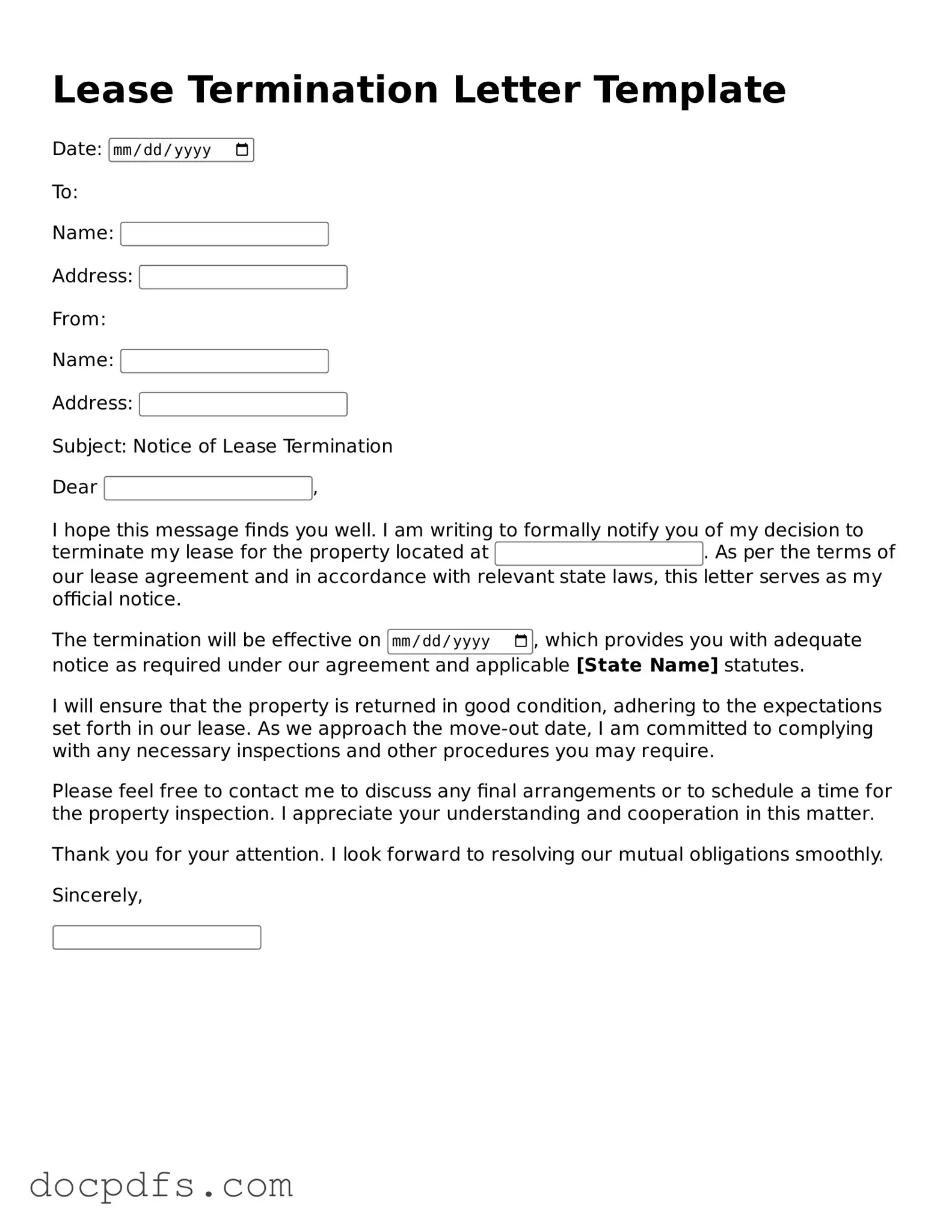When the time comes to end a lease agreement, whether for a rental property or commercial space, the Lease Termination Letter form plays a crucial role in ensuring a smooth transition. This document serves as a formal notification to the landlord or property manager, clearly stating the tenant's intent to vacate the premises. Essential elements of the form include the names of the parties involved, the address of the leased property, and the effective date of termination. Additionally, it often requires details about the lease agreement itself, such as the start date and any relevant provisions concerning notice periods. By providing a clear and concise communication, this letter helps to avoid misunderstandings and potential disputes. It also outlines any obligations regarding the return of security deposits and the condition in which the property should be left. Overall, the Lease Termination Letter is an indispensable tool for tenants seeking to navigate the conclusion of their leasing arrangements with professionalism and clarity.
